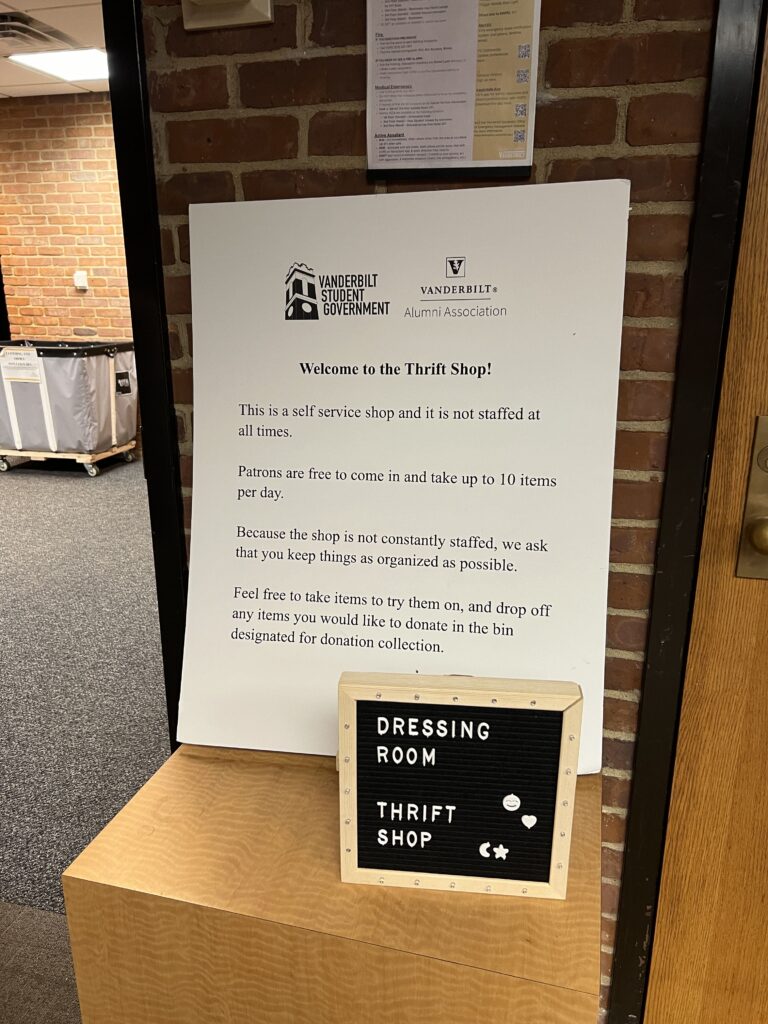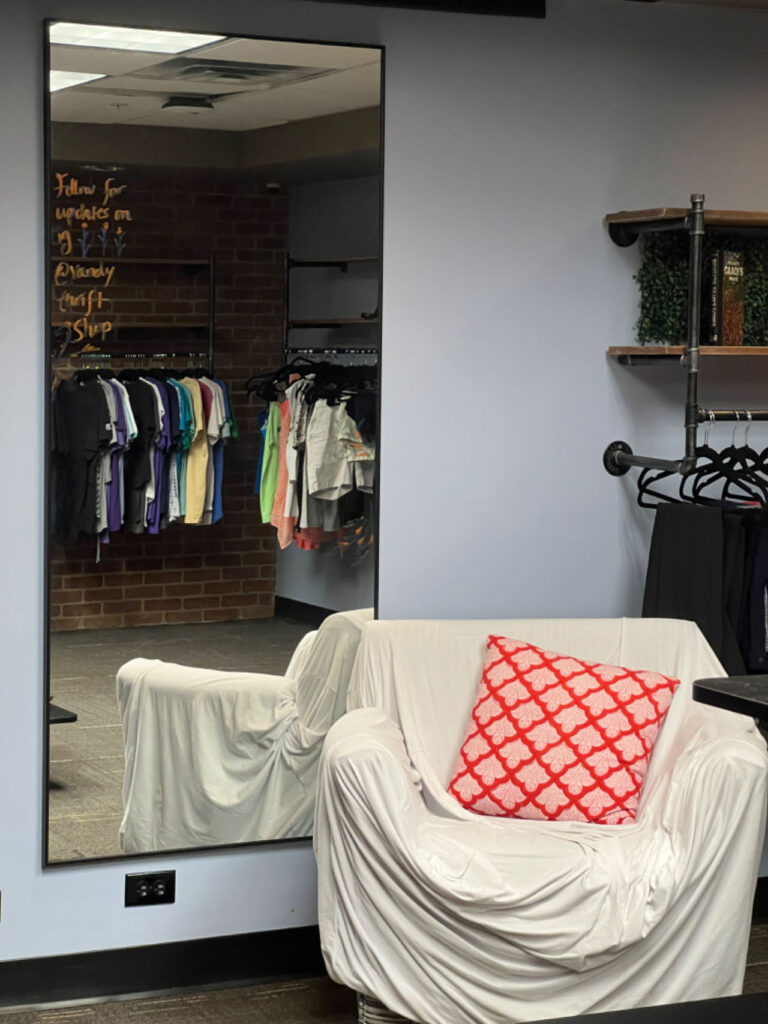Photo taken by Yixin Qian
The Vanderbilt Thrift Store, a Vanderbilt Student Government (VSG) initiative, was launched in November 2021 to offer free clothing to the Vanderbilt community. The store operates on a donation-based model, aiming to promote sustainability and inclusivity on campus. The store, located in Sarratt Student Center, is open to all students, faculty, and staff, providing clothing for all seasons at no cost.
The store has two main objectives, which are promoting sustainability by encouraging the reuse of clothing and fostering equity by ensuring that no one has to face financial stress when acquiring clothing items. The store operates without a dedicated daily staff, which provides a unique opportunity for student leadership and community-driven management.
Cultural and Sustainability Impact
The Vanderbilt Thrift Store not only provides a practical solution to students in need but also plays an essential role in shaping the university’s campus culture. By offering free clothing, it ensures that students from all financial backgrounds can access essential items without the burden of cost. This creates a more inclusive environment where all students can feel supported.
Additionally, the store’s focus on sustainability helps further Vanderbilt’s broader goals of environmental responsibility. Every item donated and reused helps reduce waste, lowering the university’s carbon footprint. In this way, the store becomes a symbol of Vanderbilt’s commitment to fostering sustainable practices while also promoting social equity.
Moreover, the flexibility of the store’s operations means that it can adapt to the needs of the community in real-time. During the cold seasons, there is a focus on winter clothing, while in the fall, more Vanderbilt-branded apparel and seasonal items, like some Halloween costumes, are made available. Student-run donation drives, pop-up events, and collaborations with other organizations help keep the store vibrant and further strengthens its role in sustainability.

Photo taken by Yixin Qian
Operational Gaps and Missed Opportunities for Student Entrepreneurship
While some might consider the lack of staff challenging, it is actually a great opportunity for a student-led approach to manage the thrift store. The volunteer-based system allows students to engage directly with sustainability efforts, and enables allows students to take leadership roles, running the store in collaboration with various campus organizations.
This structure also provides opportunities for students in business and management programs to apply their skills in real-world settings. The thrift store could serve as an incubator for student entrepreneurship, offering students hands-on experience in inventory management, marketing, and logistics. For example, a group of students could oversee different aspects of the store—handling donation drives, organizing inventory, or creating marketing campaigns to boost campus engagement.
By fostering a volunteer-driven model, the store helps build a sense of community and shared responsibility among students. It’s a space where students can directly contribute to the well-being of their peers, while gaining practical experience that aligns with their academic interests and career interests.

Photo taken by Yixin Qian
Recommendations for Future Growth
While the Vanderbilt Thrift Store is already making a positive impact, there are several ways it could grow to serve the community even better. One potential area for development is the creation of an online platform. By allowing students to browse available items online, the store could make its inventory more accessible and reduce foot traffic, while at the same time making it easier to manage the flow of donations and requests.
Students could also partner with local businesses, thrift shops, or eco-friendly brands in Nashville to expand the store’s reach through collaborations and events. A pop-up thrift market featuring student artists or local vendors could draw attention and encourage more campus involvement. Marketing efforts could additionally be improved with social media campaigns or campus-wide events to raise awareness. Students in marketing or communications programs could lead these initiatives, applying their classroom skills to promote the store and increase donations and participation.
Conclusion
The Vanderbilt Thrift Store stands as a unique initiative that blends sustainability, community service, and student entrepreneurship. Its volunteer-based model not only empowers students to take leadership roles but also fosters a sense of shared responsibility in promoting equity on campus. By reducing waste and providing free clothing to all, the store contributes to Vanderbilt’s environmental goals while supporting students in need.
Looking ahead, the thrift store has the potential to become a central part of Vanderbilt’s campus culture. With further investment in student involvement, partnerships with local businesses, and expanded visibility, the store can continue to thrive as a symbol of sustainability and community engagement.



